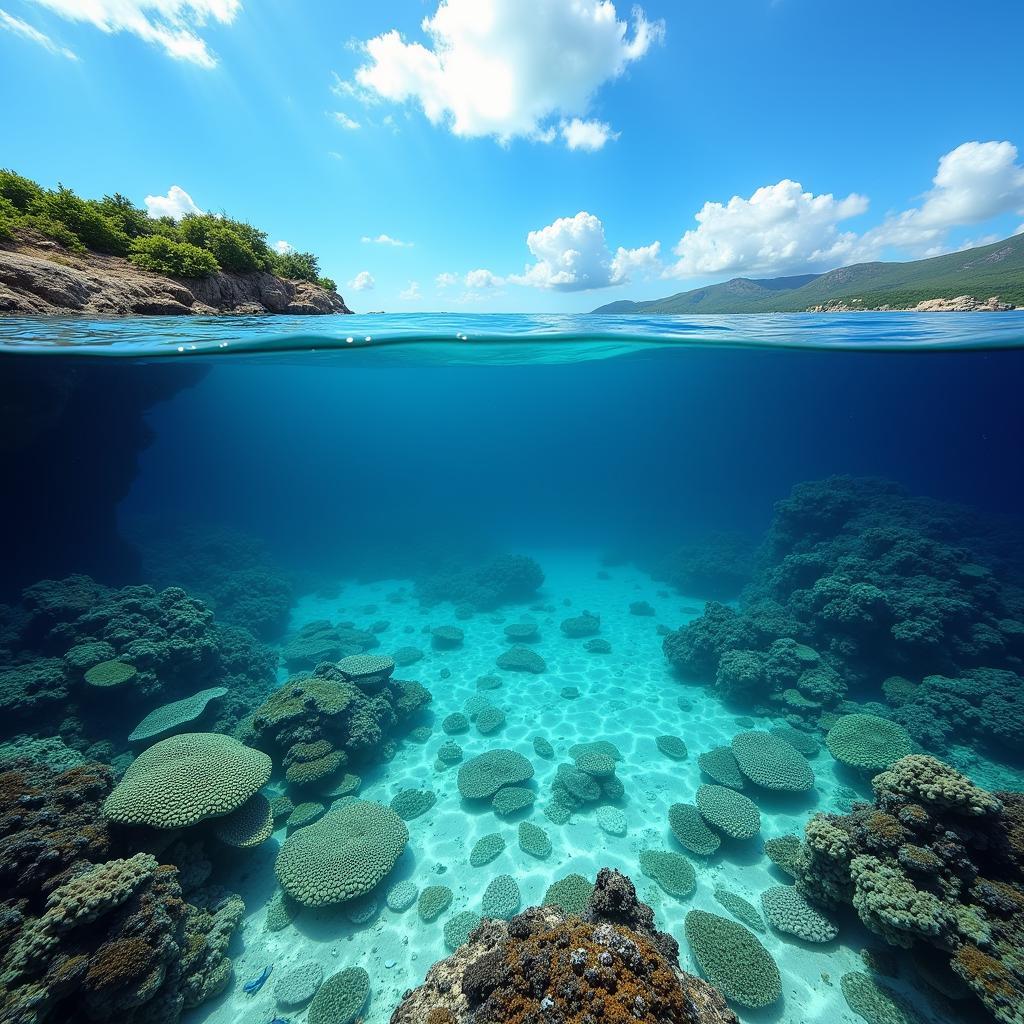Coastal Shelf Research plays a vital role in understanding the complex interplay between land and sea. This dynamic zone, where the continent meets the ocean, is a hotbed of biological activity and geological processes, making it a crucial area of study for scientists across various disciplines. From uncovering the secrets of ancient civilizations buried beneath the waves to predicting the impacts of climate change on coastal communities, coastal shelf research offers a wealth of knowledge with far-reaching implications.
Diving Deep into Coastal Shelf Research: What Does it Entail?
Coastal shelf research encompasses a wide range of scientific investigations focused on understanding the physical, chemical, biological, and geological characteristics of the continental shelf. This submerged portion of a continent, extending from the shoreline to the shelf break where a steep slope descends to the deep ocean floor, is a treasure trove of information about Earth’s past, present, and future.
The Multifaceted Nature of Coastal Shelf Investigations
Coastal shelf research involves various methods and technologies, including:
- Seafloor Mapping: Using sonar and other advanced techniques to create detailed maps of the seafloor topography, revealing hidden canyons, submerged reefs, and ancient riverbeds.
- Sediment Analysis: Examining sediment cores to reconstruct past environmental conditions, understand sediment transport processes, and identify potential hazards like underwater landslides.
- Oceanographic Studies: Measuring water currents, temperature, salinity, and other parameters to understand ocean circulation patterns and their influence on marine ecosystems.
- Biological Surveys: Assessing the diversity and abundance of marine life, from microscopic plankton to large fish and mammals, to understand the complex food webs and ecological relationships within the coastal shelf environment.
- Archaeological Explorations: Searching for submerged settlements, shipwrecks, and other artifacts that offer glimpses into human history and maritime activities.
Why is Coastal Shelf Research Important?
Understanding the coastal shelf is crucial for a variety of reasons, impacting everything from resource management to hazard prediction. These areas are incredibly productive, supporting diverse ecosystems and valuable fisheries. They also play a key role in regulating global climate and protecting coastal communities from storms and sea-level rise.
Coastal Shelf Research and Climate Change
Coastal shelf research is particularly critical in the face of climate change. As global temperatures rise and sea levels increase, coastal shelves are experiencing significant changes. Understanding these changes is essential for developing effective adaptation strategies and mitigating the impacts of climate change on coastal communities and ecosystems.
“Coastal shelf research is not just about understanding the ocean; it’s about understanding our planet’s future,” says Dr. Amelia Carter, a renowned marine geologist at the Scripps Institution of Oceanography. “The data we collect from these regions is vital for informing policy decisions and ensuring the sustainability of our coastal resources.”
 Impact of climate change on coastal shelf ecosystems
Impact of climate change on coastal shelf ecosystems
Unlocking the Secrets of the Past: Archaeological Discoveries on the Coastal Shelf
Coastal shelves have also been the sites of significant archaeological discoveries. As sea levels rose at the end of the last ice age, many prehistoric settlements and landscapes were submerged, preserving them in remarkable detail. Exploring these underwater sites provides valuable insights into human history, migration patterns, and ancient civilizations.
“The coastal shelf is essentially a time capsule,” explains Dr. David Miller, a leading maritime archaeologist at the University of Southampton. “It offers a unique opportunity to study the past and learn from our ancestors.”
Modern Applications of Coastal Shelf Data
The data gathered through coastal shelf research has a myriad of practical applications, including:
- Sustainable Fisheries Management: Understanding fish populations and their habitats is essential for ensuring sustainable fishing practices and protecting marine biodiversity.
- Offshore Energy Development: Coastal shelf research helps identify suitable locations for offshore wind farms and other renewable energy projects while minimizing environmental impacts.
- Navigation and Shipping: Detailed seafloor maps are essential for safe navigation and preventing shipping accidents.
- Coastal Protection: Understanding coastal processes helps design effective coastal defenses against erosion, storm surges, and sea-level rise.
Conclusion: The Ongoing Exploration of Our Coastal Shelves
Coastal shelf research continues to be a dynamic and evolving field, constantly revealing new insights into the complex interactions between land and sea. By understanding these crucial environments, we can better manage our resources, protect our coastlines, and prepare for the challenges of a changing world. Further research is essential to fully unlock the secrets held within these submerged landscapes.
FAQs
- What is the continental shelf?
- Why is coastal shelf research important?
- What are the main methods used in coastal shelf research?
- How does climate change affect coastal shelves?
- What are some examples of archaeological discoveries made on coastal shelves?
Need assistance with coastal shelf research or related inquiries? Contact us at Phone: 0904826292, Email: research@gmail.com or visit us at No. 31, Alley 142/7, P. Phú Viên, Bồ Đề, Long Biên, Hà Nội, Việt Nam. Our customer support team is available 24/7.